Why Your Employees Represent Your Biggest Cybersecurity Threats
Learn the risks & how to mitigate them.

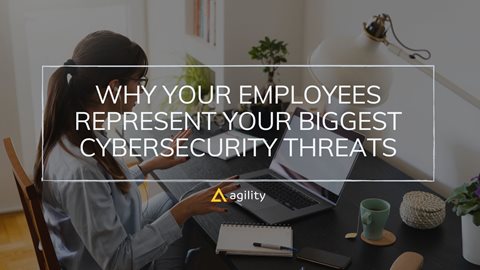
Your employees are your company's biggest asset, but they can also be your most significant security liability. In today's digital age, it only takes one mistake by one employee to open up your entire organization to a cyberattack.
What's more, cybercrime (especially crime targeting employees) is rising. Cybercriminals realize that targeting employees is more accessible than trying to breach a company's security defenses directly. There are many reasons why employees represent a significant cybersecurity risk. Here are some of the most important ones.
Third-party applications may not have adequate security measures.
Employees using third-party applications to access company data increase the risk of a data breach. This is because many of these applications do not have adequate security measures. Employees are not always vetting their third-party applications before downloading them, and they might not install regular updates, which can be problematic given the tendency for software to regress over time.
The rise of remote work
In today's business world, more and more employees are working remotely. This trend is expected to continue, with some estimates suggesting that by 2025, as many as 73% of organizations will have adopted a remote work policy.
While this trend has many benefits – increased flexibility, lower overhead costs, etc. – it also creates new cybersecurity risks. After all, if your employees are working outside of the office, they're also outside of your direct control.
That means it's more important than ever to educate your employees about best practices for cybersecurity when working remotely. Some of the specific dangers to be aware of include:
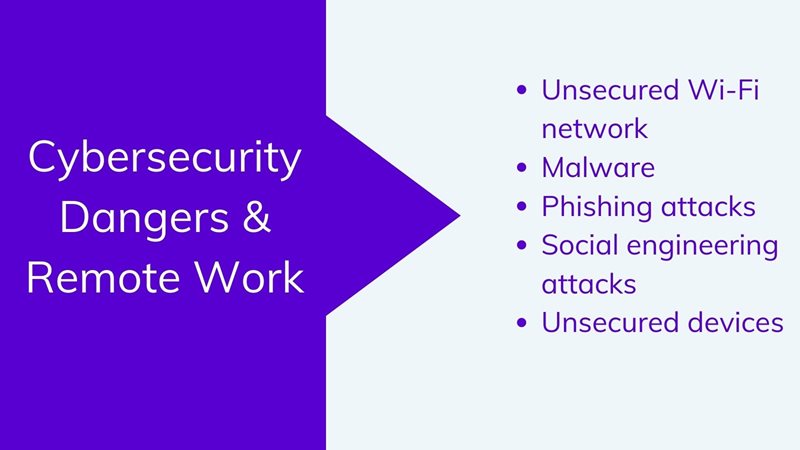
1. Unsecured Wi-Fi network
When working remotely, your employees will likely be connecting to public Wi-Fi networks in coffee shops, libraries, and other public places. These networks are often unsecured, meaning that anyone can access them. And if your employees are using these networks to access sensitive company data, that data could be at risk.
2. Malware
When using public Wi-Fi networks, your employees may also be opening themselves up to the risk of malware. This is because these networks are often full of malicious software that can infect a user's device and compromise company data.
3. Phishing attacks
Phishing attacks are a type of cyberattack in which hackers pose as a trusted entity to trick victims into revealing sensitive information. This information can then gain access to company systems or data.
4. Social engineering attacks
Social engineering attacks are another type of cyberattack that relies on tricking victims into revealing sensitive information. However, unlike phishing attacks, social engineering attacks don't always use email as the primary method of communication. Instead, attackers may use phone calls, text messages, or even in-person interactions to trick victims.
5. Unsecured devices
When working remotely, your employees will likely use their laptops, smartphones, and other devices to access company data. If these devices are not adequately secured, they could provide hackers a way into your company's systems.
To help protect your company against these and other risks, educate your employees about best practices for cybersecurity when working remotely. This should include guidance on choosing secure Wi-Fi networks, using strong passwords, awareness of phishing attacks, and more.
Lack of security awareness
One of the biggest reasons employees represent a cybersecurity risk is because they lack awareness of the dangers. Many employees are, rightly so, not confident in their ability to identify a phishing email. This presents concerns for both company and potentially even customer data.
This lack of awareness can lead to employees making careless mistakes, such as clicking on a malicious link or opening an attachment from a suspicious email. It can also lead to mistakenly sharing sensitive company information with someone who should not have access to it.
To help combat this problem, provide your employees with regular training on cybersecurity risks and best practices. This training should increase their awareness of the dangers and help them learn how to identify and avoid potential threats.
Poor password hygiene
Another reason why employees represent a cybersecurity risk is because they often have poor password hygiene. This means they reuse passwords across multiple accounts, use easily guessed passwords, or do not change their passwords often enough.
All of these habits can put company data at risk. For example, if an employee reuses a password that they also use for their email account, and that account is compromised, the attacker could use that same password to gain access to company systems.
To help combat this problem, be sure to enforce strong password policies within your company. These policies should require employees to use unique passwords for each account, change their passwords regularly, and avoid using easily guessed passwords.
Careless social media habits
Social media has become a staple in many people's lives. However, it can also be a great source of information for hackers. People often share too much personal information on social media, such as their addresses, phone numbers, birthdays, etc.
Additionally, many people do not take the time to secure their social media accounts properly. This means that their accounts can be hacked, giving attackers access to their personal information and any information they have shared about their work.
To minimize the risks posed by social media carelessness, educate your employees about the importance of security on social media. This should include guidance on choosing strong passwords, avoiding sharing too much personal information, and only connecting with people they know and trust.
They have access to company data.
One of the main reasons why employees represent a cybersecurity risk is because they often have access to sensitive company data. This data could include customer information, financial records, trade secrets, and more.
If this data were to fall into the wrong hands, it could be used to commit fraud, theft, or even sold on the black market. Additionally, if an employee were to delete or damage this data accidentally, it could cause severe problems for the company.
To help protect company data, be sure to implement proper access control measures. This means that only employees who need access to specific data should have that access, and all other employees should only have access to the data they need to do their jobs.
They can be easily tricked into clicking on malicious links or opening infected attachments.
Many cyberattacks begin with phishing emails. This email appears to be from a legitimate source but is actually from a hacker. These emails often contain malicious links or attachments that can infect a computer with malware when clicked on or opened.
Since employees are often the first defense against these attacks, they must know how to spot a phishing email. Additionally, they should be trained on what to do if they receive one.
Some common signs of a phishing email include misspellings and grammatical errors, a sense of urgency or fear, unexpected attachments, and requests for personal information. If an employee receives an email that contains any of these signs, they should report it to their IT department immediately.
Employees may be working from unsecured locations.
Like anything, remote work has been both a blessing and a curse. While it has made it possible for people to work from anywhere in the world, it has also created new cybersecurity risks. This is because employees may be working from unsecured locations, such as public Wi-Fi hotspots or personal computers that do not have proper security measures in place.
Hackers can intercept their data or gain access to their systems if an employee works from an unsecured location. To help mitigate these risks, provide your employees with the resources and training they need to work securely from any location. You should also consider providing the necessary software to keep work and personal computers secure from any location. Things such as firewalls, anti-malware software, and VPNs can go a long way in keeping data safe.
They may not be aware of the risks.
Many employees are simply not aware of the risks that they face daily. This lack of awareness can lead to careless behavior, such as clicking on malicious links or opening infected attachments.
To help combat this, be sure to educate your employees on the risks of cyberattacks and how they can protect themselves. Additionally, you should provide them with the resources they need to stay up-to-date on the latest threats. Things such as security awareness training, security newsletters, and security blogs can all be helpful in this regard.
Personal devices are often not adequately secured.
A lot more people are accessing company data using their devices, such as laptops, smartphones, and tablets. While this can be convenient, it also creates new cybersecurity risks. This is because many people do not take the time to secure their devices properly.
This means that hackers could gain access to company data if their device is lost or stolen or if they click on a malicious link or attachment. To help prevent this, be sure to have a BYOD policy that requires employees to use proper security measures on their devices.
Cybercriminals are becoming more sophisticated.
The cat and mouse game between cyber criminals and cybersecurity professionals constantly evolves. As cyber criminals become more sophisticated, they are finding new ways to bypass security measures and gain access to company data. Given the amount of digitization taking place, those opportunities continue to present themselves in new ways.
This means that even if your employees are following all of the best practices for cybersecurity, they may still be at risk. The best way to combat this is to stay up-to-date on the latest cybersecurity threats and trends and train your employees to identify and defend against them.
Social engineering attacks are on the rise.
Social engineering is an attack that relies on human interaction to trick people into divulging information or performing actions they should not. These attacks are becoming more common, as they are often more effective than traditional cyberattacks.
Some of the most common social engineering attacks include phishing, baiting, and tailgating. To help protect your company against these attacks, train your employees to spot them and what to do if they are targeted.
The consequences of a successful cyber attack can be devastating.
The consequences can be devastating if hackers gain access to your company's systems. They could steal sensitive data, destroy critical files, or even hold your systems hostage until you pay a ransom.
In some cases, the damage caused by a cyber attack can be so severe that it leads to bankruptcy or the closure of a business. This is why it is essential to ensure that your employees have trained on cybersecurity best practices and that your systems are appropriately protected.
An employee's friends and family members may be using their devices too.
When an employee gives their family or friends access to their device, they also provide them with access to company data. This is because many people do not have proper device security measures.
Hackers could gain access to company data if an employee's device is lost or stolen or if they click on a malicious link or attachment. To help prevent this, be sure to have a BYOD policy that requires employees to use proper security measures on their devices. Employees must understand that it is not ok for outsiders to see or use company data.
Conclusion
Your employees are your biggest cybersecurity threat, but there are things you can do to minimize the risks they pose. Be sure to train your employees on proper cybersecurity best practices, and have a BYOD policy that requires them to use adequate security measures on their devices.
Additionally, stay up-to-date on the latest cybersecurity threats and trends and only use third-party applications with adequate security measures. By taking these steps, you can help protect your company against the devastating consequences of a successful cyberattack.

About the Author
View Related Resources
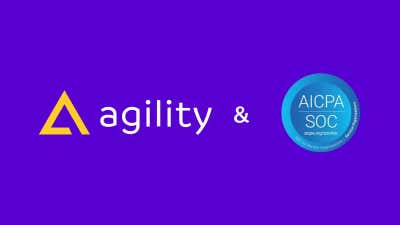
Agility CMS Achieves SOC 2 Type II Compliance
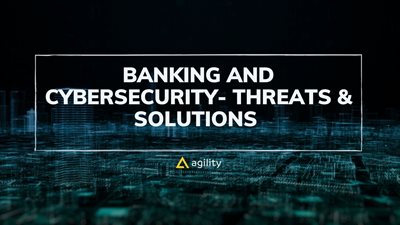
Banking and Cybersecurity- Threats & Solutions
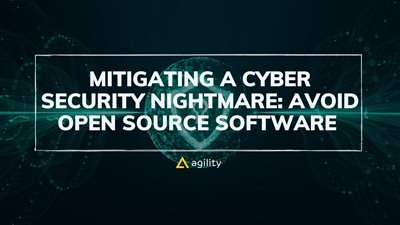
Mitigating a cybersecurity nightmare: avoid open source software
A secure environment is always mandatory. You shouldn't have to compromise.
Get enterprise security
Learn How



